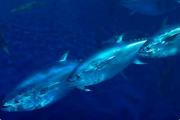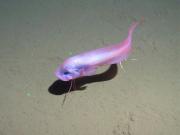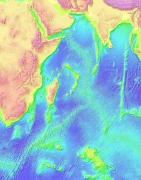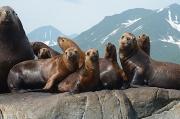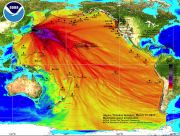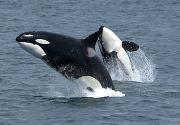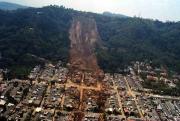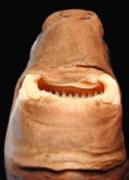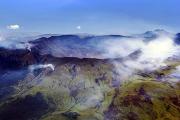Radio Program
Our regular Science and the SeaTM radio program presents marine science topics in an engaging two-minute story format. Our script writers gather ideas for the radio program from the University of Texas Marine Science Institute's researchers and from our very popular college class, Introduction to Oceanography, which we teach to hundreds of non-science majors at The University of Texas at Austin every year. Our radio programs are distributed at to commercial and public radio stations across the country.
Many species of marine life are changing addresses. As the oceans get warmer, they’re moving to new waters to seek out comfortable temperatures. But quite a few species of fish could be about to make a really big move -- from the north Atlantic to the north Pacific or vice versa. That could mean big changes for the ecosystems of both regions -- and for the people that depend on them.
More than five miles below the surface of the Pacific Ocean, the temperature is near freezing, there’s no sunlight, and the pressure is more than five tons per square inch. Yet that forbidding zone is home to the deepest fish yet seen — a tadpole-shaped creature known as a snailfish.
Most of the ocean floor is more poorly mapped than the surfaces of the Moon or Mars. That fact has been highlighted by the search for Malaysian Airlines flight 370, which vanished in 2014. Investigators concluded that it crashed into the southern Indian Ocean. But the search was hampered by the lack of good maps of the ocean floor.
That poor view hinders research as well. The contours of the ocean floor guide currents, and they affect the way different layers of water mix together. So good maps help scientists develop better models of ocean circulation, climate change, and more.
When Europeans began settling in the Americas, they carried diseases that decimated the native populations. Centuries earlier, though, other visitors from the Old World may also have brought a deadly disease to the New: tuberculosis. But these visitors weren’t intent on conquest or searching for gold. In fact, they weren’t even human — they were seals and sea lions that crossed the Atlantic Ocean.
What happens in Vegas may stay in Vegas, but what happens in the oceans almost never stays put. Ocean currents transport materials across vast distances. So if something unpleasant happens in one spot in the oceans, its effects may be felt thousands of miles away.
An example is the failure of nuclear reactors in Japan in 2011. A massive tsunami damaged reactors in Fukushima, releasing large amounts of radioactive material into the air and into the Pacific Ocean. The debris in the ocean quickly spread out. In fact, some of it traveled all the way to the west coast of North America.
The day before Georgia hosts a football game against Florida, thousands of Bulldogs fans congregate on St. Simons Island for a big party. And the following day, county workers congregate there for a big clean-up.
The trash is more than unsightly. Birds can get tangled in plastic, and if the trash washes out to sea, turtles can choke on plastic bags they mistake for jellyfish.
If you move to a new part of the country, you’ll eventually start to sound a bit like the natives. Your accent might shift a little, and you’ll pick up the local dialect — the language and speech patterns that define that area.
The same thing appears to be true for killer whales. Some recent research found that orcas that are kept around bottlenose dolphins eventually start to “talk” more like the dolphins.
In November of 1929, a strong earthquake rattled the Atlantic Ocean south of Newfoundland. On shore, the quake knocked down a few chimneys and blocked some roads, but otherwise caused little damage on its own.
On the ocean floor, though, it triggered a giant landslide. Perhaps 50 cubic miles of sediments tumbled down the slopes, creating a tsunami. The waves soon crashed into Newfoundland and Nova Scotia, killing about 30 people and damaging or destroying dozens of villages.
Few creatures are foolhardy enough to take on a great white shark — much less try to lure one in. Yet a shark that’s no longer than your arm has been known to do just that.
The cookiecutter is among the smallest of all sharks. Adults are only about 16 to 20 inches long. They inhabit warm waters around the world, mostly near islands.
In October of 1815, a ship near the coast of India encountered an amazing sight: a “raft” that stretched for miles across the Indian Ocean. It consisted of ash, topsoil, dead trees, and other debris from a volcano that blew its top six months earlier — the most powerful eruption of the past 2,000 years or more. It killed almost a hundred thousand people, and altered the climate across much of the planet.

